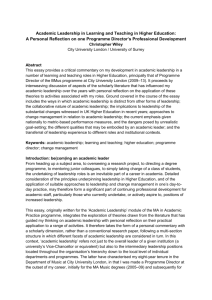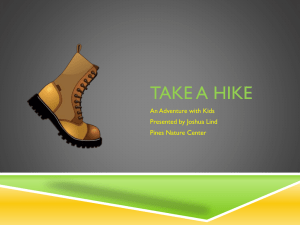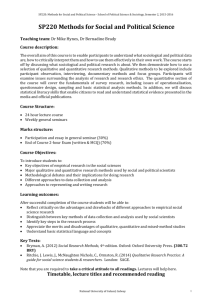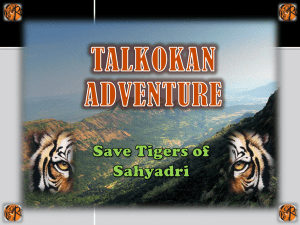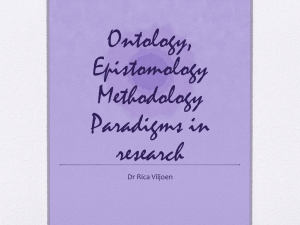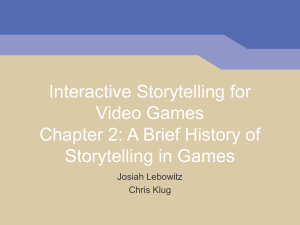Simon Beames
advertisement
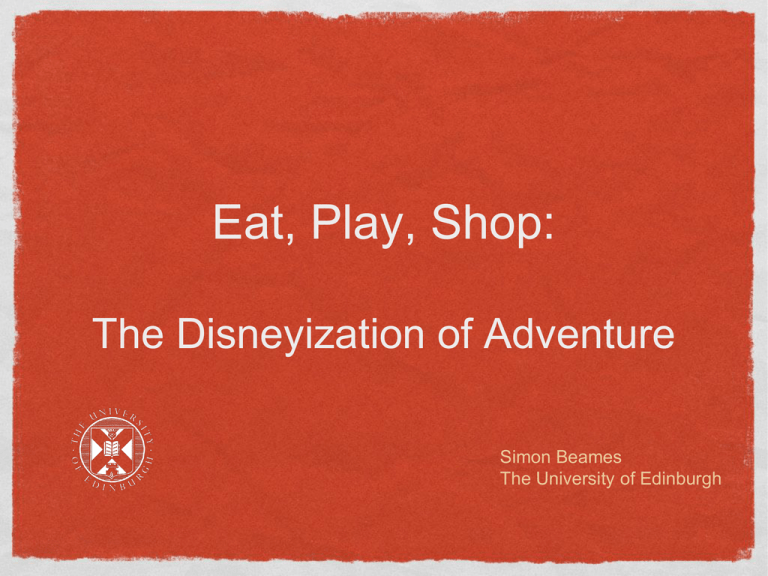
Eat, Play, Shop: The Disneyization of Adventure Simon Beames The University of Edinburgh Background / Rationale McDonald’s Outdoor Adventure Education Loynes Ritzer Adventure cathedrals Bryman Disneyization “the process by which the principles of the Disney theme parks are coming to dominate more and more parts of American society and the rest of the world” (Bryman, 2004, p. 1) Different from Disneyification, which is the rendering of historical events and tales into trivialised, ‘sentimentalised’, and sanitised products. (p. 5) Research questions To what degree are features of Bryman’s Disneyization framework present in Scotland’s adventure recreation sector? How might this framework be useful for researchers, practitioners, and business managers interested in outdoor adventure recreation / education / tourism? Pre-disneyization literature Ritzer’s McDonaldization of Society (1993) Efficiency Calculability Predictability Control Replacement of human labour with technology Loynes’ Adventure in a Bun (1998) “Disneyization takes up where McDonaldization leaves off” (Bryman, 2004, p. 4) Four features Disneyization may have elements of McDonaldization, but it comprises its own distinct features: 1.Theming 2.Hybrid consumption 3.Merchandising 4.Performative labour A preliminary investigation Two indoor adventure centres: Ratho (climbing, aerial course) Snozone (skiing, snowboarding) Principal data gathered from websites Findings presented by theme Theming • • “the application of a narrative to institutions and locations” (Bryman, 2004, p. 15) “we live in an experience economy in which consumers seek out services that will be provided in an entertaining way and will result in a memorable experience” (p. 16) Ratho: Belay café, Rock-tots nursery Snozone: Sno-bar! Hybrid consumption • Different forms of consumption become interlocked, blurred, and increasingly difficult to distinguish (Bryman, 2004, pp. 57-58) Ratho: bouldering, climbing, abseiling, aerial course, café, gear store (Tiso), gym, spa, and ceramic centre Snozone: part of larger Xscape complex featuring10 retail stores, 15 restaurants / cafés, cinemas, ‘fan drop’, and mini-golf. People can ‘Play, eat, and shop under 1 roof’ (Xscape, 2011). Merchandising • “the promotion of goods... bearing copyright images and logos... a mechanism for leveraging additional uses and value out of existing, wellknown images” (Bryman, 2004, p. 79) Snozone’s Snoshop sells apparel and offers ‘everything you need to look even better on the slopes!’ (Snozone, 2011, para 3). Ratho has a Tiso outlet -- very much climbingfocused Performative labour ...refer to employment situations in which the worker conveys positive emotions (Bryman, 2004, p. 104) turning work into a “theatrical performance in which the workplace is construed as similar to a stage” (p. 103) Summary of initial findings • What evidence of Disneyization exists? Theming: moderate indicators Hybrid consumption: strong indicators Merchandising: few indicators Performative labour: few overt indicators One unexpected finding One phenomenon that both adventures centres have in common: Invitations to be connected to their social networks RSS feeds, Twitter, and Facebook enable individual consumers to remain aware of further opportunities to engage with the adventure centre and, almost inevitably, spend more money. So what? Academic exercise, pub chat, or something in between? Is Disneyization negative? Perhaps it can be a ‘good thing’. Maybe there is nothing wrong with consumption that ‘can provide comfort, pleasure, self-esteem, escape and decontrol’ (Warde, 2002, p. 17) Four main critiques: distortion of history and place, manipulation of children, consumers, workers Implications For practice May help people /organisations consider ways in which they want to more deliberately adopt or resist elements of Disneyization Outdoor educators may view Disneyization very differently from those in recreation and/or tourism For research Develop a larger, more systematised methodology for data collection and analysis Develop theoretical connections with literature on recreation, leisure, and consumption The big question? How are members of the public being advantaged and disadvantaged by these transforming social arrangements? Eat, play, shop: How Disneyized is your adventure? References Bryman, A. (1999). The Disneyization of society. The Sociological Review, 47, 25–47. Bryman, A. (2004). The Disneyization of society. London: Sage. Loynes, C. (1998). Adventure in a bun. Journal of Experiential Education, 21(1), 35-39. Ratho. (2011). Things to do. Retrieved from http://www.eicaratho.com/content/things-to-do-/2423/ Ritzer, G. (1993). The McDonaldization of society. Thousand Oaks, CA: Pine Forge Press. Snoshop. (2011). Snoshop. Retrieved from http://www.snoshopuk.com/ Snozone. (2011). Sno-bar. Retrieved from http://www.snozoneuk.com/v/scotland/activities/sno-bar Warde, A. (2002). Changing conceptions of consumption. In A. Anderson, K. Meethan, & S. Miles (Eds), The Changing Consumer (pp. 10-24.). London: Routledge. Xscape. (2011). Home. http://xscape.co.uk/braehead
